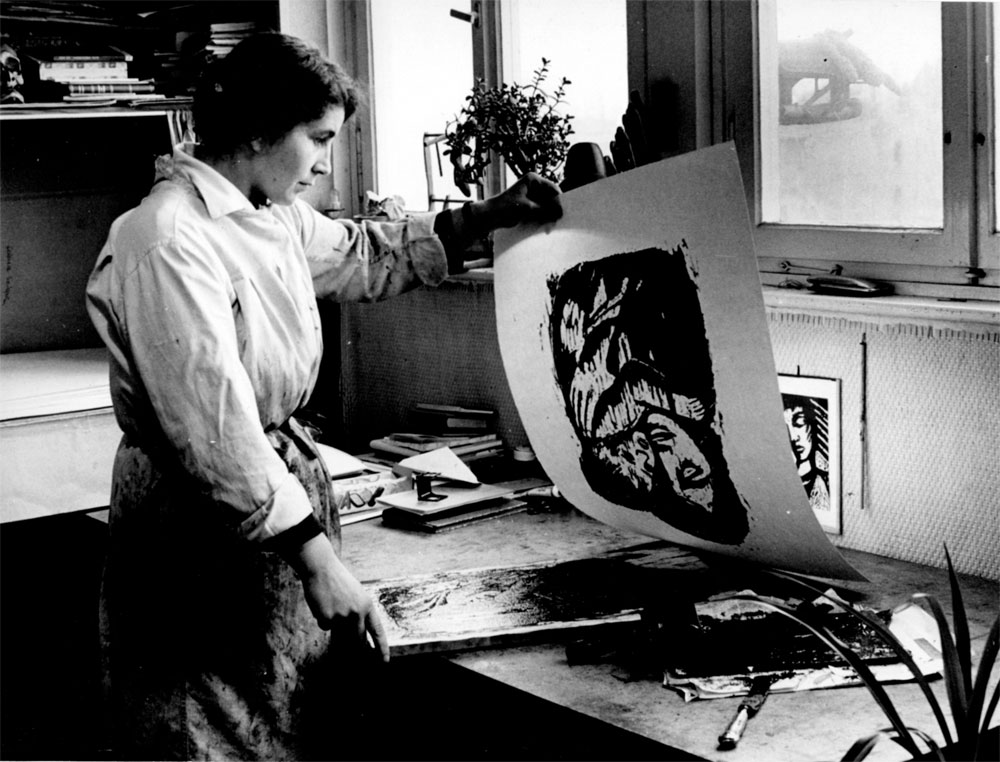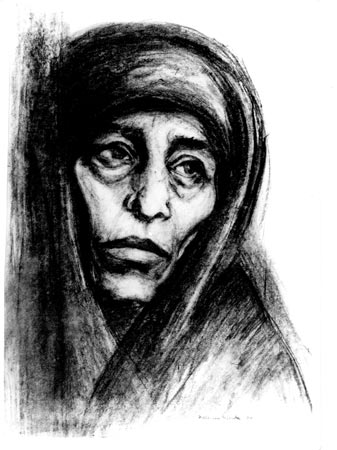

† 04/08/1998 in Berlin
Helena Scigala

About this Site
After my mother's death in spring 1998, I carefully preserved her extensive artistic estate. As a result of the historical-scientific exploration of this heritage, her life's work can now be appropriately honored in 2022!
This site showcases her artistic legacy and serves as a memorial to the graphic artist Helena Scigala and her companions (mostly from Berlin).
Besides a small glimpse into her oeuvre, which you as a visitor to this site can experience without commentary, you will find a biographical interim assessment and a timeline of her life and work. Her previously researched solo exhibitions, exhibition participations, and book illustrations are documented. Excerpts from the extensive contemporary media coverage bring to life diverse opinions and reflections on the person and her works. A bibliography provides various references to the sources for this website.
An extensive archive contains personal and professional documents, private and professional correspondence, invitations to vernissages, exhibition catalogs, copies of illustrated books, a collection of newspaper clippings (especially exhibition reports), a photo collection predominantly by the Berlin press photographer and photojournalist Stefan Fey, as well as monographic and collective contributions about my mother's life and work.
The extensive graphic work is currently being compiled in a catalog raisonné.
Martin Scigala
Adresse e-mail :
Berlin, August 2022
Biographical Interim Assessment
The Berlin graphic artist Helena Scigala has until now belonged to the so-called "lost women" of art, those women who were well-known and honored during their lifetime but who were excluded from public perception after their death - also for reasons of gender-hierarchical processes of tradition.
Her works touched and impressed people of all generations at the time, as evidenced by a multitude of letters to the artist (often sent to the publisher's address after a publication about her). The image motif "Mother and Child" was a central theme of the graphic artist, who herself was completely absorbed in her role as a mother. She created a wide range of human emotions, from intimate love to deadly fear.
Helena Scigala, who is counted among the most important visual artists of the former GDR, and whose works were contemporaneously appreciated as reminiscent of those by Käthe Kollwitz, did not have a life path that we would describe today as simple or barrier-free. While Helena Scigala was by no means alone in her generation in the 20th century and in the middle of Europe, she had to overcome several obstacles simultaneously to assert herself.
In biographical research about the artist, a perspective that younger historical scholarship calls intersectional can be usefully applied. This refers to the presence of multiple and overlapping underprivileges in one and the same person with regard to criteria such as gender, socialization, dominant role patterns, profession, religion, or citizenship.
Greatly abbreviated and only related to gender, profession, and nationality, it can be stated for Helena Scigala: she was underprivileged as a female orphan and later as a single mother in the 1950s; she was underprivileged as a woman in the visual arts, and she was underprivileged for a long time as a stateless person in the GDR.
Through her love relationship with a married man, the then art student found herself in the status of an unmarried pregnant woman; afterward became a late childbearer by contemporary standards, with her age of almost 31 being six years above the average of her generation group in Germany, and finally remained for almost two decades a working mother who was "single-parenting" in the full sense of the word.
The structural disadvantages and the obvious unequal treatment of women in the art business of the GDR (see also the gender-specific data under the point "Exhibition participations") applied equally to Helena Scigala. However, she also experienced mentoring in the male-dominated professional field, especially through her teacher Prof. Arno Mohr, as well as motivation and patronage from her older companion Herbert Tucholski. After the political upheaval of 1989 in Germany, the by then 68-year-old fell victim to the individual social disruptions of this event and is an example that "poverty in old age" particularly often affects women.
Additional investigations are still needed on the negative effects of statelessness, which ended only on the artist's 52nd birthday with the presentation of a GDR citizenship certificate. Her position as a non-academic in the circle of the artistic intelligentsia - as a youth she was only able to complete elementary school - would also deserve to be examined more closely.
Note: All works are protected by copyright. Reproductions require the permission of the copyright holder (see Imprint).
The selection of works shown here is a cross-section of her artistic creation and not arranged chronologically. Since the complete work is very extensive, this selection will be changed at irregular intervals.
Please direct inquiries by email to:






















